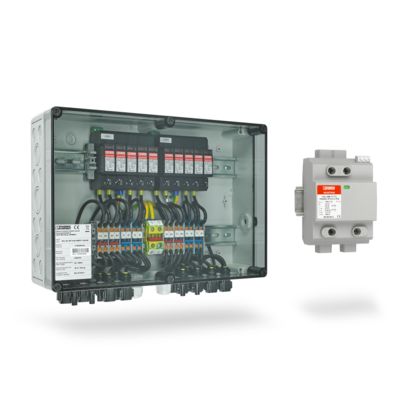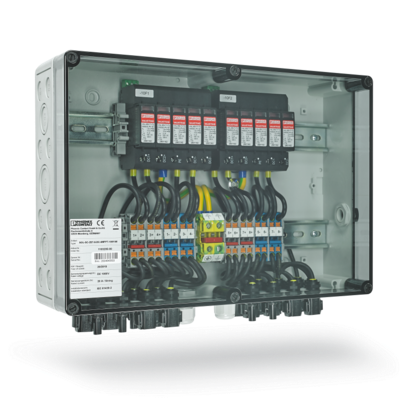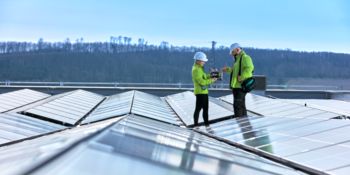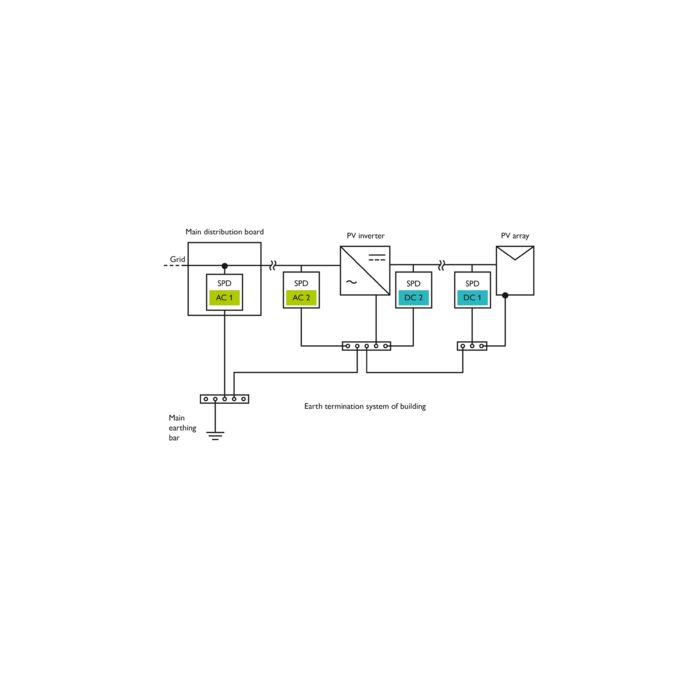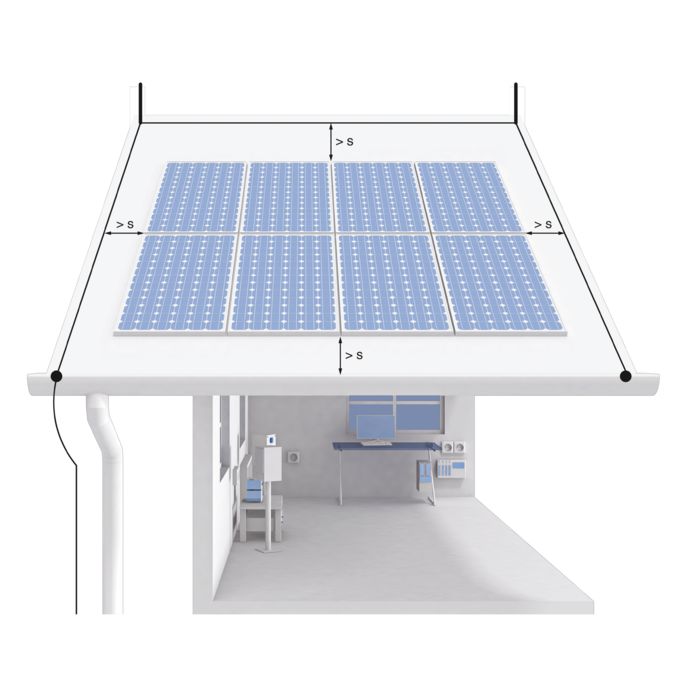
Separation distance “s” is the minimum distance needed between the lightning conductor and photovoltaic system to prevent the lightning flashing over. Experts need to help determine this because the distance is difficult to calculate. All PV components should be installed with a clearance of at least this distance. If the distance is not maintained, the photovoltaic system is connected to the lightning protection system, which places increased requirements on surge protection.

